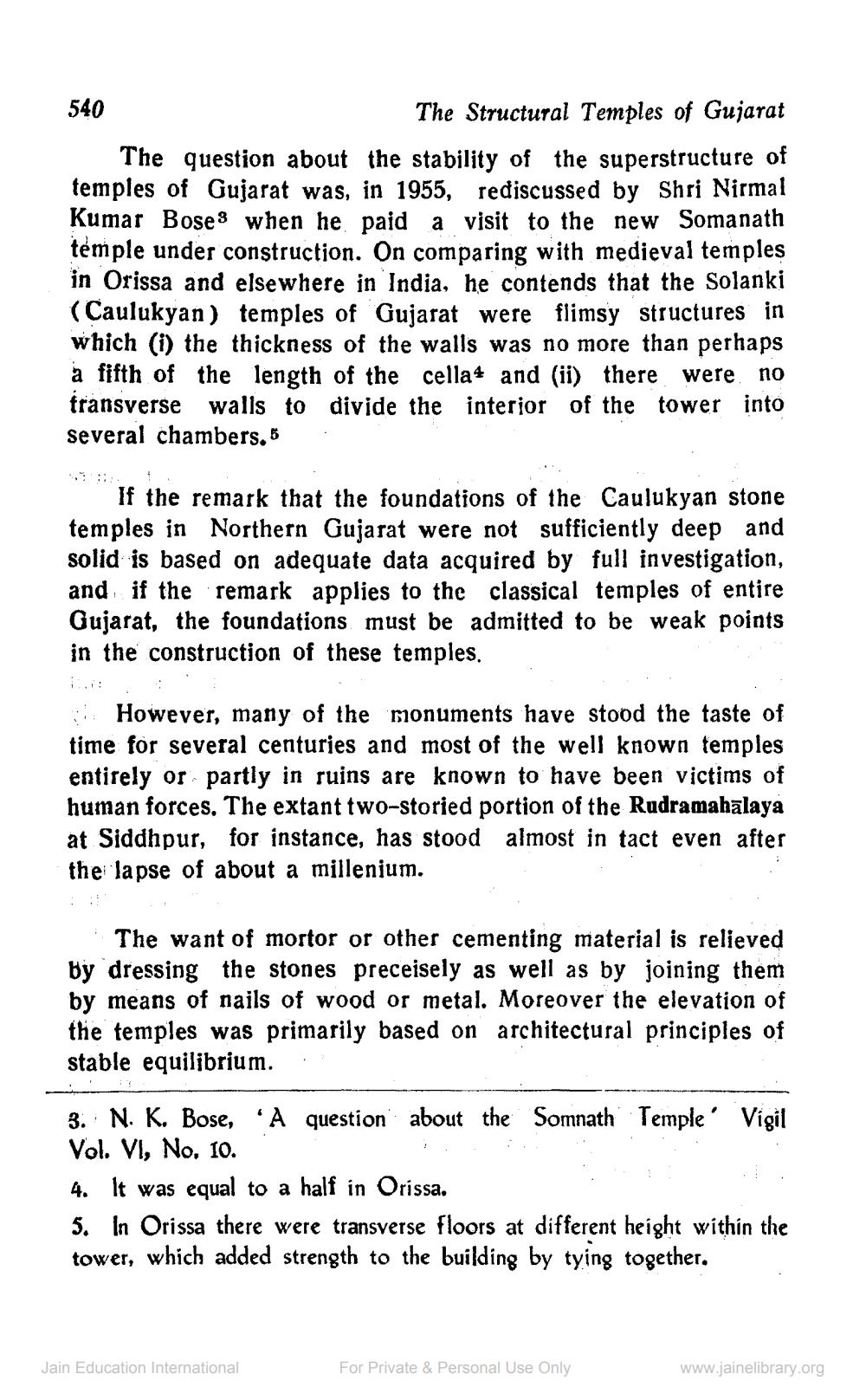________________
540
The Structural Temples of Gujarat
The question about the stability of the superstructure of temples of Gujarat was, in 1955, rediscussed by Shri Nirmal Kumar Bose when he paid a visit to the new Somanath temple under construction. On comparing with medieval temples in Orissa and elsewhere in India, he contends that the Solanki (Caulukyan) temples of Gujarat were flimsy structures in which (i) the thickness of the walls was no more than perhaps a fifth of the length of the cella and (ii) there were no transverse walls to divide the interior of the tower into several chambers.5
If the remark that the foundations of the Caulukyan stone temples in Northern Gujarat were not sufficiently deep and solid is based on adequate data acquired by full investigation, and if the remark applies to the classical temples of entire Gujarat, the foundations must be admitted to be weak points in the construction of these temples.
11.4:
However, many of the monuments have stood the taste of time for several centuries and most of the well known temples entirely or partly in ruins are known to have been victims of human forces. The extant two-storied portion of the Rudramahālaya at Siddhpur, for instance, has stood almost in tact even after the lapse of about a millenium.
The want of mortor or other cementing material is relieved by dressing the stones preceisely as well as by joining them by means of nails of wood or metal. Moreover the elevation of the temples was primarily based on architectural principles of stable equilibrium.
3. N. K. Bose, 'A question about the Somnath Temple' Vigil Vol. VI, No. 10.
4. It was equal to a half in Orissa.
5. In Orissa there were transverse floors at different height within the tower, which added strength to the building by tying together.
Jain Education International
For Private & Personal Use Only
www.jainelibrary.org




